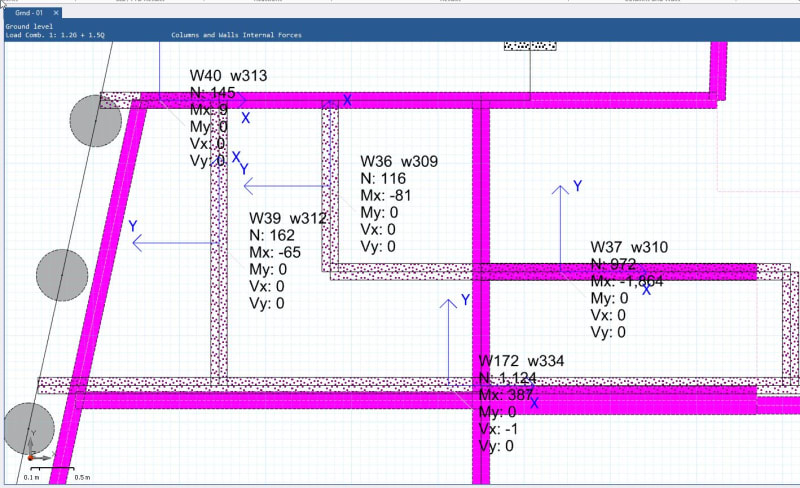atef81
Structural
- Jan 7, 2010
- 12
Hi All,
I was tasked to design reinforced core filled masonry walls for loads I was given.
The walls have axial compression loads and in plane bending moment.
I can't find resources that explain how to design masonry walls against in plane bending moment to Australian Standards AS3700.
Or at least what is the concept that I have to follow.
I attached an example of the internal forces on the walls for one of the load combinations.
Please note that this screenshot is from Inducta RCB software. Inducta system puts the moment in the direction of the axis, not about the axis. (So Mx is the same direction as Sx; and all are in the local x direction of the wall)
I appreciate any guidance to a method, even using first principles.
Thanks in advance

I was tasked to design reinforced core filled masonry walls for loads I was given.
The walls have axial compression loads and in plane bending moment.
I can't find resources that explain how to design masonry walls against in plane bending moment to Australian Standards AS3700.
Or at least what is the concept that I have to follow.
I attached an example of the internal forces on the walls for one of the load combinations.
Please note that this screenshot is from Inducta RCB software. Inducta system puts the moment in the direction of the axis, not about the axis. (So Mx is the same direction as Sx; and all are in the local x direction of the wall)
I appreciate any guidance to a method, even using first principles.
Thanks in advance


